Cat ownership would be easier if our pets could tell us what they’re thinking. However, until a cat-to-human translator exists, we will have to use contextual cues and our pet’s body language to determine their moods.
A cat’s tail is one of the most expressive parts of their body. So, if your cat’s tail is twitching, you’re probably wondering what they’re thinking. Unfortunately, a wagging tail can mean a lot of different things, so you’ll need to put your thinking cap on to determine what’s going on.
From the thrill of practicing their hunting skills to frustration in aggravating situations, there are many possible reasons for your cat’s tail to wag. Read on to learn more about your cat’s mood and the driving forces behind this behavior.


The 6 Reasons Why Cats Twitch
1. They hunt
Cats will sometimes wag their tails because they are hunting or playing. This happens when they focus intently on their prey, whether it’s a real life mouse or a soft one you just bought from Amazon.
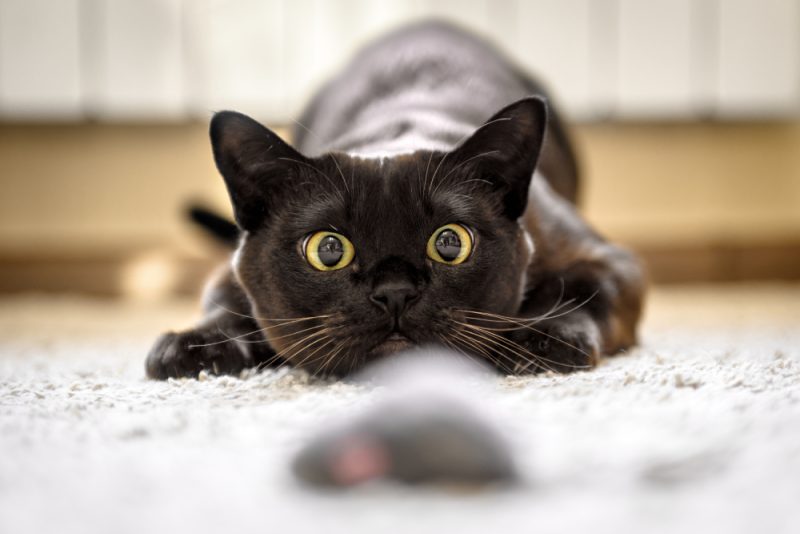
2. They are very happy
When children are happy and excited, they often jump up and down as a way to release their pent-up energy and express their enthusiasm. Our cats don’t have the same ability to show their happiness, so a wagging tail can also mark hope and excitement.
3. They are annoyed
When your cat wags the tip of its tail violently from side to side, it may be slightly annoyed or frustrated. This could be a warning sign that your pet doesn’t like something you’re doing, but he’s not yet at the point where he’ll take the next step and act out their annoyance.
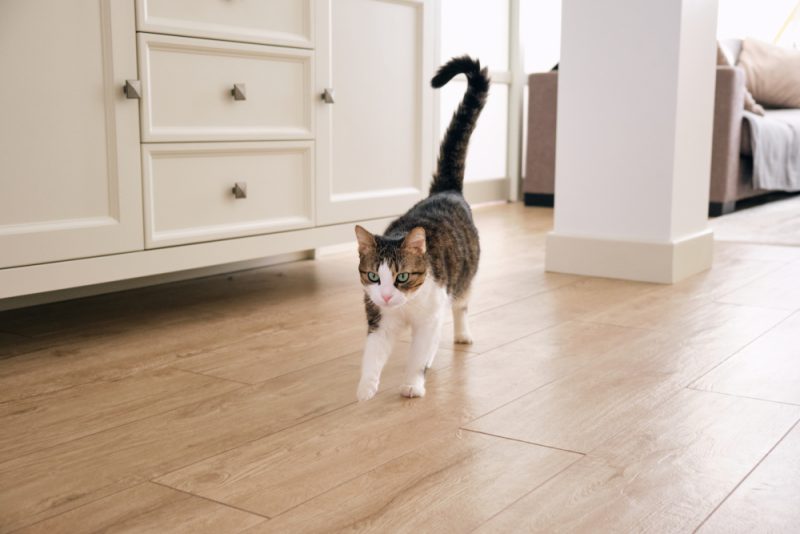
4. They Become Aggressive
Tail twitching is also sometimes associated with aggression. The more your pet’s tail wags back and forth, the less happy they will be. A quick wagging tail could mean they are posing a threat to you or another pet in the house. You may also see other aggressive behaviors, such as growling or hissing. Their tails can also be heard on the floor or nearby walls.
5. They spray
You know your cat is spraying when they stand up, hold their tail straight in the air, and put their back toward a target (eg, walls, blankets, curtains, etc.). Their tail will shake, and they will splash urine on something.
Spraying is most likely to occur in cats that have reached sexual maturity, and it can occur in both male and female cats. This often happens to healthy males and females in heat, although spayed or neutered ones can also spray.
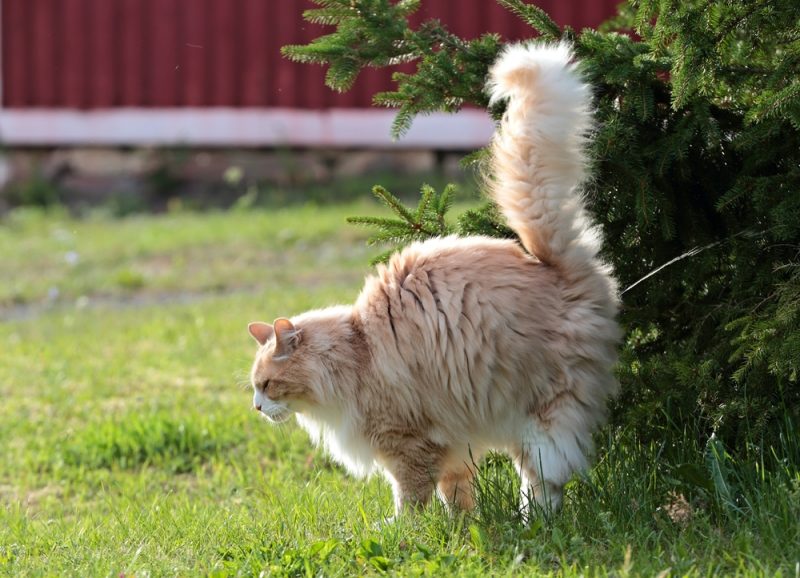
6. They have Feline Hyperesthesia Syndrome
Feline hyperesthesia syndrome (FHS)—also known as “twitchy cat syndrome”—is a rare condition that causes increased sensitivity to touch and uncontrollable muscle contractions. FHS is poorly understood, and its cause is still unknown, although it is often associated with neurological, psychological, or dermatological causes. Before it can be diagnosed, other conditions that cause similar signs must be ruled out.
Cats with this condition may wag their tail, but they will often show other signs, including:
- Rippling or twitching of the skin on the back
- Bites or licks themselves (especially on the back, sides, and back)
- Pain or discomfort when stroking
- Dilated pupils
- Short bursts of running
- Tail chasing


How Do I Know Why My Cat’s Tail is Wagging?
With so many reasons for your cat’s tail to wag, it can seem impossible to pinpoint exactly what your cat is feeling. However, it’s actually quite easy if you stop and consider your behavior and your cat’s current environment.
Consider what your kitten is currently doing, his body language, and what is going on around him to determine the exact cause of your pet’s tail twitching.
For example, a cat that is tormented by your baby is unlikely to wag its tail out of excitement, especially if its ears are bored and they are staring at your child. It is more likely in this situation that your cat is feeling irritated and ready to strike.
Also, if you use your cat’s favorite toy to play with them, they probably won’t wag their tail because they’re spraying or feeling aggressive.
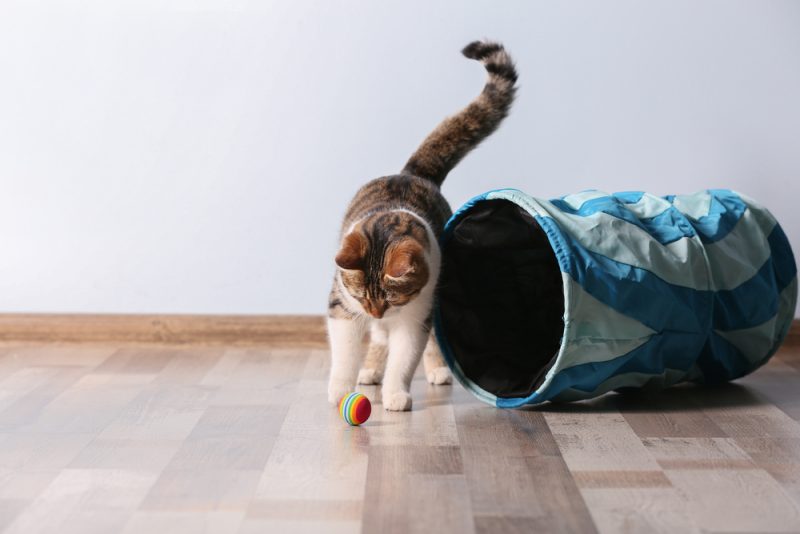
What Else Your Cat’s Tail Tells You
Cats exhibit other tail postures besides twitching because it is one of the few ways they can communicate their mood and communicate with other cats and humans.
| question mark tail | Friendly, funny |
| Puffy tail | Fearful, defensive, or aggressive |
| Low tail | Nervousness or fear |
| Hidden beneath: | Afraid or anxious |
| directly: | Confident, happy, friendly |
| Wagging: | Angry, frustrated |
| Slow stroke: | Focused, potential hunting |
| Quick whipping: | Annoyance, uncertainty |
How Else Can Cats Send Moods?
Cats don’t just use their tails to convey their mood. Other subtle (and not so subtle) body language cues include:
- Facial expressions. The ways your cat moves their eyes, ears, and mouth can indicate their mood. Cats who are feeling relaxed will have normal eye and ear positioning, while those who are feeling angry will have ears and narrowed eyes. Cats with pricked ears and dilated pupils can be fearful.
- Look in the eye. How much eye contact your cat makes can tell you how relaxed or confrontational he is feeling. Slow blinkers with a calm gaze can feel comfortable and relaxed, while those who stare without blinking can challenge you.
- Posture. Cats displaying the classic black Halloween cat arched back and bottle brush tail feel aggressive or defensive, while those stretched out with their bellies up are relaxed and comfortable.
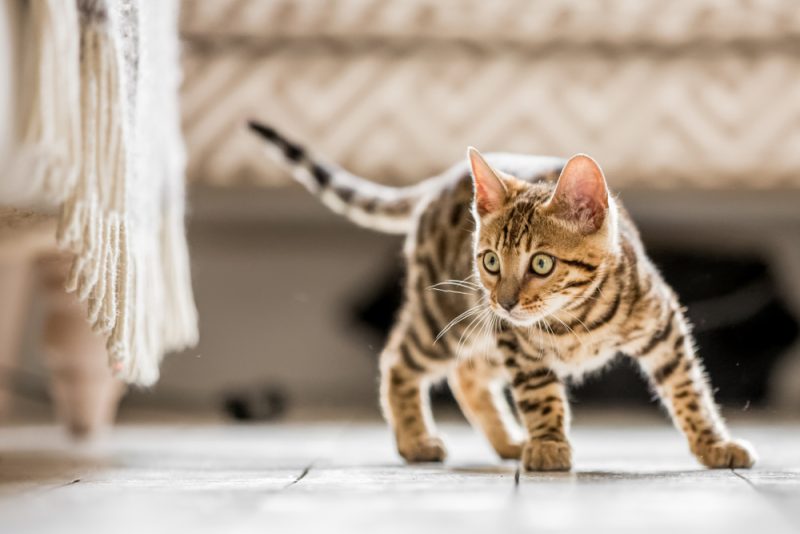


Final Thoughts
As you can see, a cat’s tail wagging can mean many things. It can be difficult to determine the exact reason behind your pet’s tail movement without also considering their body language and contextual cues from their environment. However, once you consider what else is going on in your cat’s world and how to read their body language, you’ll become an expert on your pet’s moods and emotions.
Featured Image Credit: olivier.laurent.photos, Shutterstock


